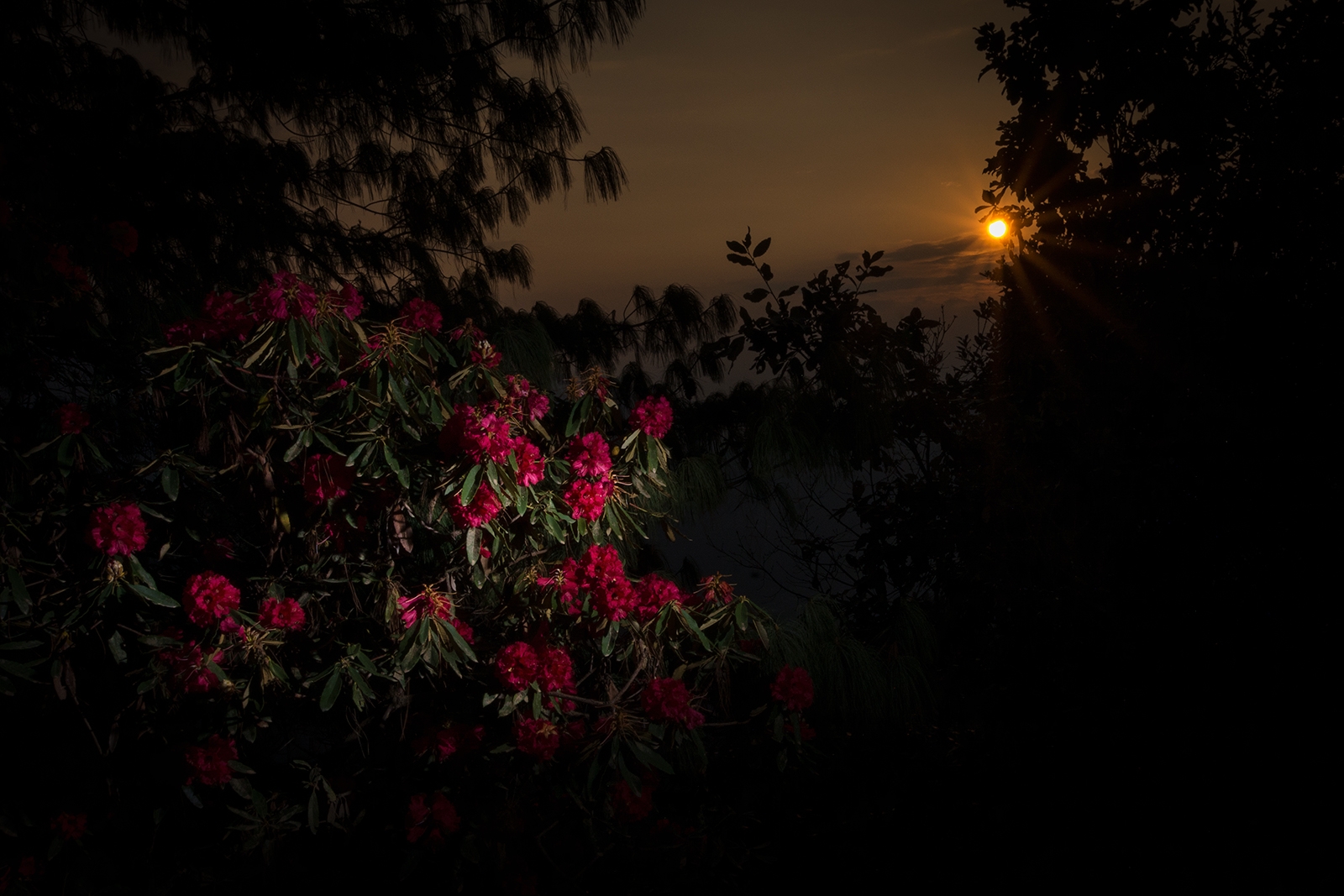Soumabrata Moulick
Passionate Wildlife Photographer
About Him:
Soumabrata Moulick is a passionate wildlife photographer, trainer and nature enthusiast. Primarily interested in behavioural and conservation photography, he believes that knowledge and awareness is the key to conserve our natural heritage. Devoting most of his time to the observation, study, and documentation of nature, he loves to share knowledge through his writings and workshops. Through his works, he aspires to contribute towards the conservation of fast vanishing natural wonders. He is associated with DCP Expeditions as a Panel Expert and Consultant Strategy Team.
On a Quest to find the Phantom
Clouds kiss the tree-line and rhododendron blooms
Moss covers the ghostly trees is where the phantom looms…

My journey into to the fascinating world of wildlife photography started with photographing birds many years back, it was a very natural choice as l had been watching them for sometime and they were rather easy to find. As time went by, diversifying my subject portfolio became a priority and I moved on to photograph mammals, insects, reptiles and amphibians.
It is generally said that tracking down a cat in the wild is one of the most difficult feats to perform, which in my humble opinion is only partially true. Any animal in the wild depends heavily on it’s ability to blend-in with its surroundings and is equally difficult to track down. Try finding an elephant in a pristine grassland or dense woodland habitat and you will realise that it is no less than a magic trick how wonderfully it vanishes behind the veil of vegetation when it wants to.
Although all of them are excellent in the art of blending-in, yet some have acquired a legendary status; which can be attributed to their small population size, terrain they inhabit and behavioural traits. One such bird I longed to see and photograph in the wild is the Ward’s trogon (Harpactes wardi), which is venerably called the “phantom of the jungle”.

The opportunity presented itself very recently when the photography groups I was leading in North-East India left after their successful trips and I had a few days in hand before I was to return to Mumbai. Discussing the options of visiting lesser known habitats with a friend over brunch, Eaglenest wildlife sanctuary in the district of West Kameng, Arunachal Pradesh was decided. Even though the sanctuary is famous as the home of Bugun liocichla, it offers extraordinary diversity in terms of flora and fauna and can be termed as a heaven for photographers looking to go off the beaten track. It was an easy choice and by late afternoon arrangements were made and I set off on my quest to find the phantom.

Over the next couple of days we drove through Tezpur and entered Arunachal Pradesh through the small town of Bhalukpong after obtaining the Inner Line Permit for the visit. The drive ahead through Tippi, Elephant Flats, Sessa and Zero point to the town of Tenga is an extremely enjoyable one as the roads passes through the lush mountains of the region. After reaching Tenga, I met my local friend, who is currently involved in various research projects in the area and we planned on targeting specific spots where trogon habitats exist in and around the sanctuary. Taking the stock of the situation, I realised that the phantom was not sighted easily, no wonder it was seen by few, and it was going to be a real challenge to obtain decent images.
Next morning, we started when it was still dark and reached the forest check-post at day break, after obtaining a permit to enter the sanctuary, we visited the nearest trogon habitat called Alubari. Although we didn’t see any success in terms of our target species, I was able to make images of the rhododendron against a backdrop of the rising sun and species including the green-tailed and Mrs. Gould’s sunbird, red-tailed minla, rufous-headed parrotbill, spot-winged grosbeak, white-tailed nuthatch, beautiful sibia etc. were sighted and photographed. At this spot I had an unpleasant experience getting stung by a stinging nettle while chasing a bugun liocichla for an image; the burning sensation subdued in sometime but my hand and leg remain swollen for the rest of the trip…well, a small price to pay for such diversity encountered.

After a satisfying birding and photography session I moved on to visit another trogon habitat called Bhoot Golai, the spot has dense vegetative cover and almost all the trees were laden with moss, we found fresh elephant tracks there, most probably from before daybreak. The deafening silence at the spot justified it’s name; I’ve seldom encountered such a silent zone in a forest with no sound of insects or birds to be heard. After about two hours of searching, we gave up and decided it was time for lunch. We drove down to Lama Camp which is a basic tented accommodation camp nearby to the spot and though we hadn’t informed in advance, we were welcomed with a hot cup of tea and some super-delicious lunch at the camp. At this elevation the temperatures were cold and it was obvious why the pet cat at Lama camp was so possessive about her favourite spot near the earth oven in the kitchen 🙂

Thanking the kind staff profusely we started on our journey ahead towards the Eaglenest pass, stopping and checking intermittently for the presence of the bird at various spots. The view at Eaglenest pass was breathtaking; it was late afternoon, and there was no sign of the sun anywhere, the forest around was shrouded in mist as if trying to hide the secrets it holds. After spending some time here, we started back towards Lama camp to visit our last spot of the day called the Tragopanda trail, the trail is named so as it is frequented by the two species of tragopans found here and the red panda. Moving some distance into the forested trail we heard some movement in the bush, it was a hoary-throated barwing inside a thicket, we stayed still and it came so close that I was not able to focus with my super-telephoto lens, we moved back a little and were able to make some good close-up images of the bird. While we were busy photographing the barwing, I heard a faint, haunting call from deep within the trail….Phantom??!! I exclaimed inquisitively and my friend nodded confirming that it was not a hallucination. We left everything else and started walking towards the direction of the call and after sometime heard another one from not very far away, we could figure as this time the call was much louder but we were confused about the direction as it echoed. Looking around and moving cautiously, after about walking for 10mins, I spotted what looked like a streak of bright red to our right which settled on the first row of trees next to the trail, I put a hand on my friend’s shoulder and he immediately sat down knowing that I’ve spotted our grand prize. I slowly raised my lens as the bird sat immobile, observing us. After making some images it flew off and sat on a mossy perch at some distance. I took a good look and the colours were magnificent to say the least, it was a male.

I kept clicking, while it cleaned it’s beak by rubbing against the moss and kept flying from one perch to another, sometimes diving close to the forest floor maybe to catch insects and after sometime perched high up a branch where getting good images were not possible anymore; light was getting low by the minute and we stood there observing the fabled “phantom of the forest” in all its glory. Satisfied with the sighting and images made, we left the spot wishing the phantom a good luck for the upcoming breeding season. Back to the vehicle, my driver asked me if I got the bird? I asked him back, what do you think? And he replied, “from the smile on your face, I think your mission is over!” 🙂
Few of his works:
[huge_it_slider id=”6 “]







